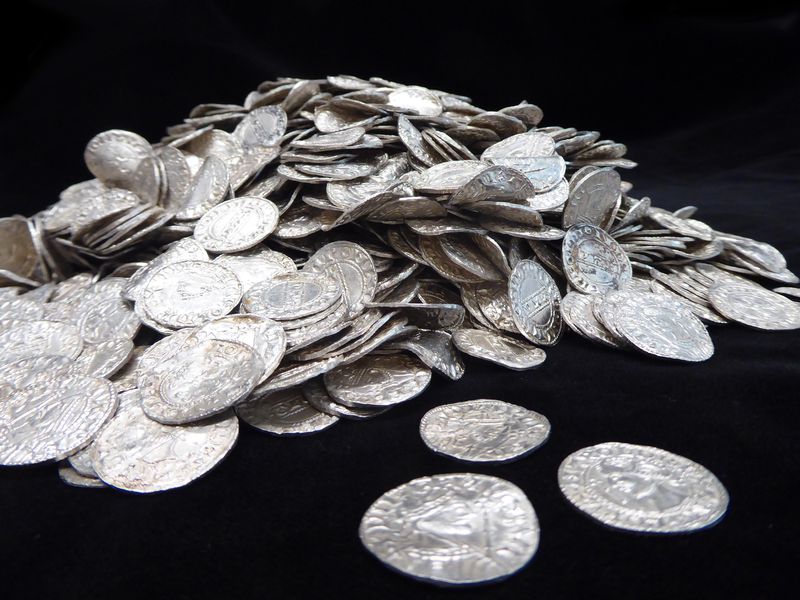The largest post-Conquest coin hoard ever discovered was recently unearthed by a group of seven metal detectorists near the Chew Valley area in North Somerset, England.
Unveiled by the British Museum’s Portable Antiquities Scheme (PAS) this August, the hoard was first uncovered in January. It’s mostly comprised of coins depicting Harold Godwinson, also known as Harold II, who was the last crowned Anglo-Saxon king of England, and his successor, William the Conqueror, who was the first Norman king of England.
It’s the largest Norman hoard found since 1833 and the largest ever found from the immediate aftermath of the Norman Conquest of 1066. A total of 2,528 coins were found dispersed in ploughsoil and reported to the local coroner as required by the U.K.’s Treasure Act 1996.
“This is an extremely significant find for our understanding of the impact of the Norman Conquest of 1066,” said Gareth Williams, curator of Early Medieval Coinage.
“One of the big debates amongst historians is the extent to which there was continuity or change, both in the years immediately after the Conquest and across a longer period. Surviving historical sources tend to focus on the top level of society, and the coins are also symbols of authority and power. At the same time, they were used on a regular basis by both rich and poor, so the coins help us understand how changes under Norman rule impacted on society as a whole.”
1,236 HAROLD II COINS, 1,310 WILLIAM I COINS
The coins were brought to the British Museum a day after being discovered, cleaned for identification purposes and catalogued in a report for the coroner. The hoard is in good condition, according to the museum, and includes 1,236 coins of Harold II and 1,310 coins of the first type of William I plus several fragments.
“It’s an amazing feeling to have unearthed this spectacular hoard,” said Lisa Grace and Adam Staples, two of the hoard’s finders, who added they’ve been told the coins could be worth more than £5 million ($8 million Cdn.), although no official valuation has yet taken place.
It’s believed the hoard was buried – for reasons currently unknown – a year or two after the 1066 conquest.
EARLY MULE EXAMPLES
The so-called “Chew Valley” hoard also contains the first known examples of a mule – a coin struck with either an incorrect obverse or reverse die – between Harold and William.
“An early form of tax evasion, this avoided the moneyer paying a fee each time new dies were acquired – re-using an old die one illicitly avoided the fee,” reads a statement issued by the museum this August.
“In this case, the mule demonstrates that coins were produced with Harold II’s name on after William I had taken control of the country following the Norman Conquest and established coinage of his own.”
The find offers “an unprecedented opportunity to examine changes in the coinage in the immediate aftermath of the Norman Conquest,” according to museum officials.

